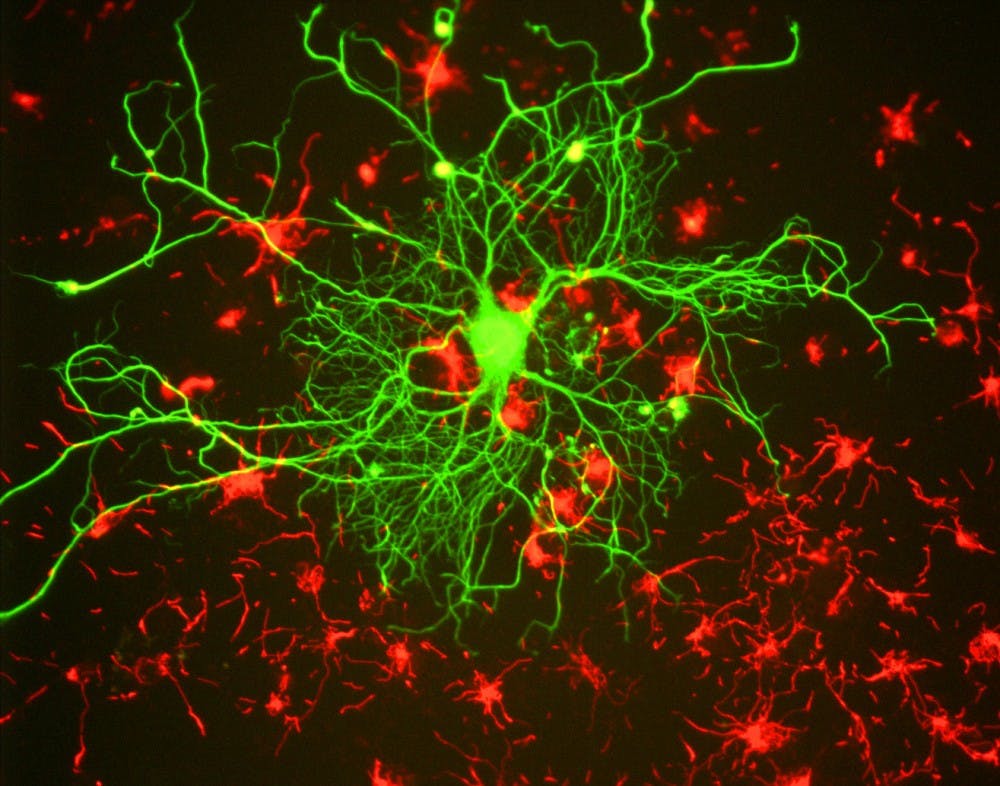Somewhere around puberty, everyone spent a good chunk of their life listening to some adult teach about the wonders of the human body. The physical differences are obvious: Males tend to have more facial hair, females are generally shorter and have more delicate facial features. The subtle differences are harder to catch but still noticeable. Males tend to be louder and more aggressive while females are more emotional. Psychologically, there is a dichotomy between behaviors that men versus women exhibit, and researchers may have found a reason why.
Margaret McCarthy at the University of Maryland School of Medicine recently identified a developmental pathway that leads to neurological differences in male and female rats. The mechanism began with androgens, a group of related hormones, the most notable one being testosterone.
It’s well known that androgens are the main cause of the male and female developmental differences, activating the growth of male sexual organisms and triggering male puberty later in life. Androgens may even be a factor in causing baldness. Females also have androgens but in a much smaller amount — about eight percent as much as males. In females, androgens mainly act as the precursor to estrogen, the female sex hormone. Besides testosterone, androgens also include dihydrotestosterone, androstenedione and dehydroepiandrosterone.
In the male rats, the high concentration of androgens affected the development of a part of the brain called the amygdala. The amygdala is nestled deep inside the human brain and is part of the limbic system. It is considered an archaic part of the brain, existing in simple animals and responsible for very basic thought processes and reactions. The amygdala is specifically associated with responses of fear and pleasure, as well as being involved in memory and decision making. Across the animal kingdom, a larger amygdala is correlated with more aggressive behavior. In humans, males tend to have larger amygdalas.
During embryo development of the rats, the androgens caused less newborn cells to grow into the amygdala. The androgens caused increased signaling between neuron receptors for endocannabinoids, a type of neurotransmitter. Endocannabinoids are usually involved in appetite, pain sensation, mood, memory, reward pathways and, as the name suggests, mediating the effects of cannabis. In this pathway, the increased signaling of endocannabinoid neurotransmitters triggered the immune system, which then eliminated some of the newborn cells in the amygdala.
This was not observed in females; instead, the newborn cells of the amygdala went on to become glial cells, the most abundant cell type in the central nervous system.
McCarthy commented that this was a step toward understanding how male and female differentiation occurs in mammals.
“We already knew that the brains of males and females are different and that testosterone produced during the second trimester in humans and late gestation in rodents contributes to the differences, but we did not know how testosterone had these effects,” McCarthy said in a press release.
McCarthy’s lab has been prominent in this area of research. They were one of the first to study how the activity of hormones during development can affect physiology and behavior as an adult. Her lab was also involved in discovering that female development is spurred by the suppression of male genes, through a process called DNA methylation, the modification of DNA that effectively silences the gene. Other projects have included inflammatory and immune-mediated sex differences in the brain, sensitive periods in brain development, the growth of the brain after birth, and the role of GABA (a neurotransmitter) in brain differences.
In understanding the root causes of male and female developmental differences, treatment for developmental disorders can be streamlined based on gender. It’s also worth noting that the endocannabinoid neurotransmitter was a key player in the pathway, suggesting that cannabis may have a prominent effect on fetal development. Although it is only a small piece of a very large and yet unknown pie, McCarthy has started to make the connection between androgens and differences in male and female development.





